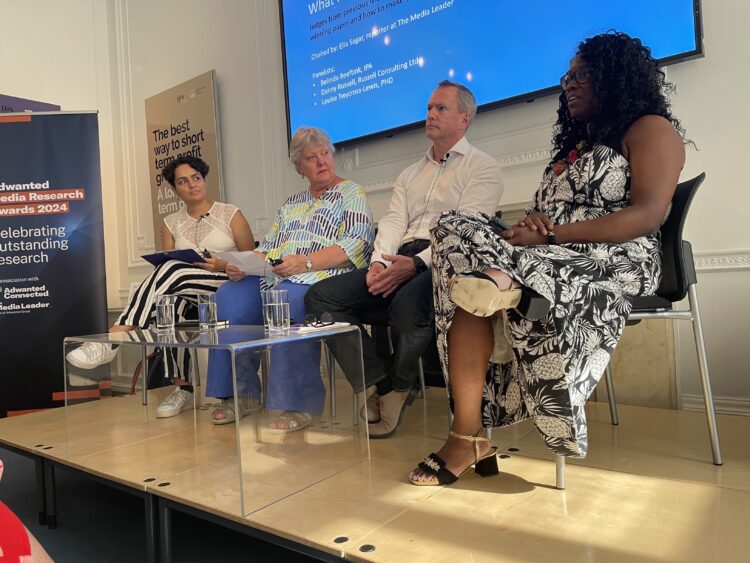‘Everybody loves a story’: tips for how to improve your media research award entry


The Adwanted Media Research Awards (AMRAs) 2024 opened for submissions this week, but what distinguishes a winning paper for the judges?
On Thursday, the AMRAs held a launch event at the Institute of Practitioners in Advertising (IPA) and kicked off with examples of best practice from winners of this year’s awards from Wavemaker, Sky & MTM, and CFlight.
Belinda Beeftink, IPA research director and returning head of the AMRAs, said that each of these winning projects respectively showed the importance of thinking about language, partnership and collaboration, identifying and being honest about hurdles faced and making the highly complex simple to understand.
In the final panel of the day, Beeftink joined two other current and former judges, Louise Twycross-Lewis, head of insight at PHD UK and Danny Russell, founder of marketing consultancy DRC, to give more advice for what makes a winning entry.
Beeftink urged potential applicants to include evidence of outcomes and testimonials (from clients for example), which add particular weight to a paper. She stressed thinking about what the outcomes of a research project are (not just a number of downloads for instance) and the work behind it.
She also noted compelling trends in papers were more and better evidence of business outcomes, and companies doing good work on “very tight budgets,” speaking to that pressure and working more collaboratively at a company level and within specialisms.
Emphasising the seven tips from the judges on the AMRA website, Russell, an AMRA judge this year, said a winning entry needed to include both business objectives and research methodology, and not forget about one or the other.
He also emphasised the importance of storytelling throughout, adding: “The judges are after the lessons that were learned but also those that weren’t. Sometimes entries can read a bit too perfect and there’s always this suspicion that says: was it that easy?”
Russell warned against the use of AI to write an award entry and recommended delegates to also “stick to the rules” in terms of word count, and category-specific criteria. For example, when it comes to attaching documents to a submission, don’t use it to add another 15,000 words because, ultimately, that will not win an award. Instead he recommended using those documents to link to websites, and in particular visuals.
Russell explained: “We all like to think we’re super intelligent. We like watching moving pictures, so visuals is a really good way of showing as well as telling. Everybody loves a story.”
Louise Twycross-Lewis, head of insight at PHD UK, echoed the importance of storytelling and advocated for being creative in a submission, whether that is for applying an existing methodology in a unique way or to a new solution.
She explained: “It’s about being really thorough from start to end and telling that arc of how you took a particular challenge or issue, what you did to to meet it and what you’ve encountered along the way and the results and the evidence that you delivered. Telling that story is a really key thing to keep coming through.”
All of the panellists highlighted the importance of proper spelling and grammar throughout a submission, so as to avoid unwanted distractions, and added that if companies were submitting a project to the AMRAs for more than one award category, to edit each entry accordingly so it is more relevant for the individual category.
